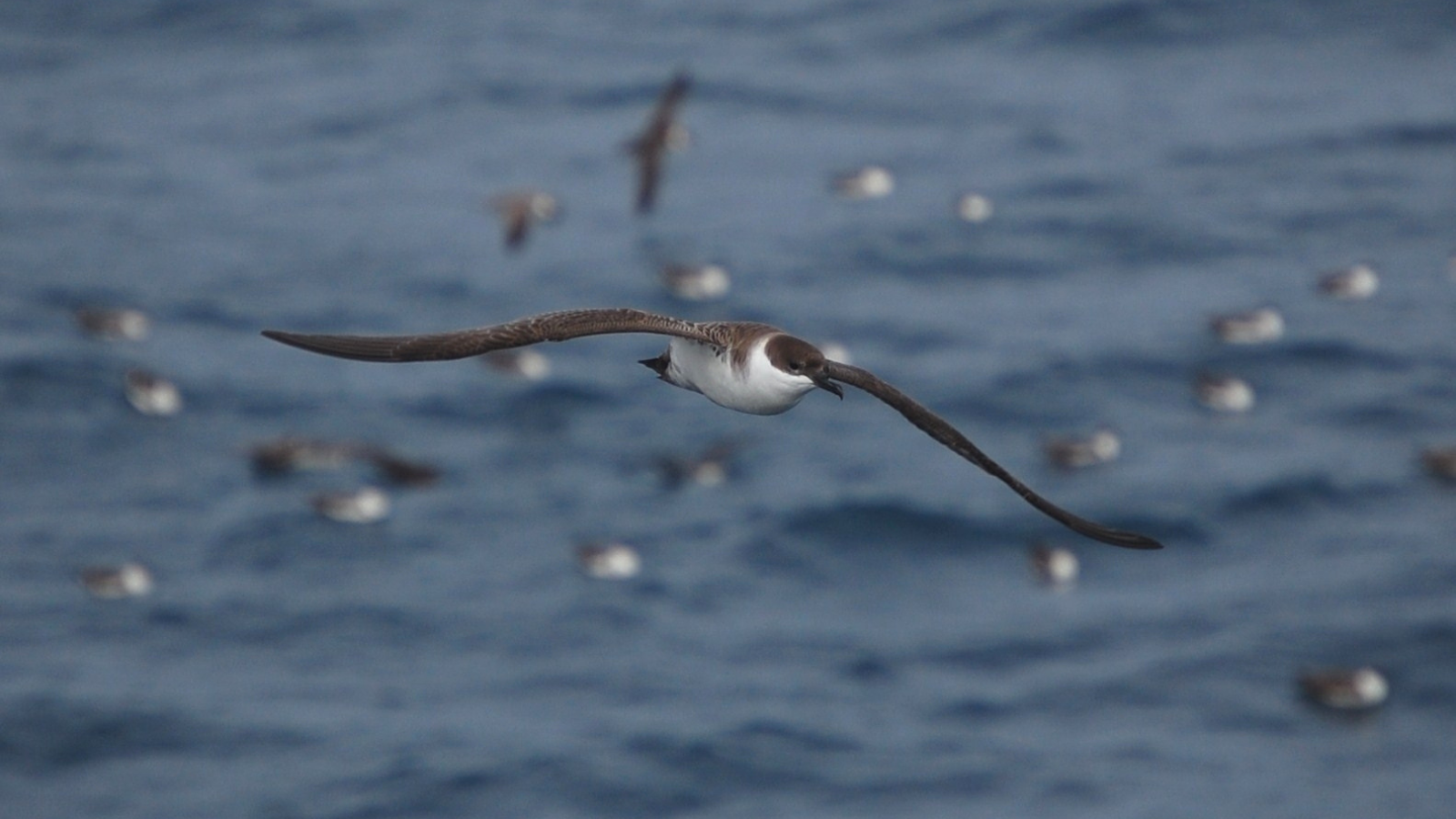
The seabirds you’ll see in the Gulf of Maine’s kelp forest
Gulls, Puffins, Petrels, and more - meet the wonderful seabirds of the Gulf of Maine kelp forest
The blue waters of the Atlantic rock your boat. Suddenly, a flock of seabirds soars overhead in search of food. What could they be?
While this is a question you would ask yourself anywhere in the Gulf of Maine, you’d likely ask it more often if you sail 90 miles offshore to the underwater (and above) wonderland at Cashes Ledge.
Home to a stunning and vibrant ecosystem, Cashes Ledge is an underwater mountain range located in the Gulf of Maine that hosts one of the deepest kelp forests in the North Atlantic. This forest forms the basis of a unique, vibrant ecosystem that supports marine life like humpback whales and North Atlantic cod but many seabirds as well.
Here are some of the incredible birds that can be found circling Cashes Ledge. When we protect areas like Cashes, we make sure that these winged creatures have a habitat where they can thrive.
Sooty Shearwaters
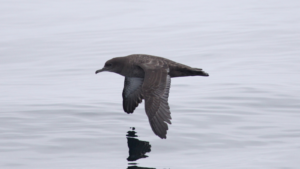
Shearwaters, like this one photographed off the coast of California, are one of the most common seabirds found in Stellwagen Bank NMSPhoto by Sophie Webb/NOAA | Public Domain
The Sooty Shearwater is a migratory bird that flies stunning distances. They nest in the southern hemisphere but can be seen as far as the North Atlantic in late spring, where they feed on fish and krill. They fly close to the water, “shearing” the ocean with their brown wings. These birds can also dive up to 220 feet underwater while hunting for fish! Sadly, they are near threatened, due in part their risk of getting captured in fishing lines and the impact of global warming on the distribution of the fish and krill they feed on.
Great Shearwaters
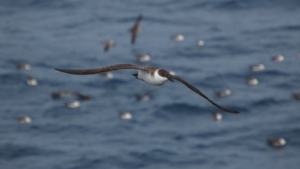
A great shearwater soars over the Southern OceanPhoto by Lieutenant Elizabeth Crapo/NOAA Corps | CC-BY-2.0
Another shearwater (a catch-all name for 37 species of seabirds that fly low over the water) you can spot at Cashes Ledge is the Great Shearwater. About the same size as the Sooty Shearwater but with a longer wingspan, Great Shearwaters frequent the North Atlantic but prefer to nest elsewhere – this time in the South Atlantic on Gough Island and islands in Tristan da Cunha group. These birds fly thousands of miles between these locations every year, gliding low to the water and feeding on fish, squid and crustaceans.
Cory’s Shearwater
The final shearwater on our list is the Cory’s Shearwater. The Cory’s Shearwater is known for its powerful, lumbering flight, with slower wingbeats. This yellow-billed shearwater sometimes follows whales to take advantage of the fish the whales push to the surface as they feed. While they have been spotted at Cashes Ledge, they prefer warmer waters to feed and can even be occasionally spotted from shore in southern New England.
Wilson’s Storm-Petrel
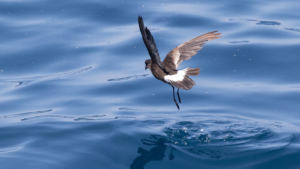
A Wilson’s Storm Petrel hovers above the water near Hudson Canyon, off the New Jersey shore.Photo by Ryan Mandelbaum | CC-BY-2.0
About the size of a robin, the relatively small size of the Wilson’s Storm-Petrel does not prevent it from thriving out on the open ocean. These birds feed by hovering over the water’s surface, plucking small fish and crustaceans with their bills, and may even follow behind whales to snatch up extra fish the whales bring to the surface. The Wilson’s Storm Petrel also happens to be one of the most abundant seabirds off the East Coast of the United States.
Black Tern
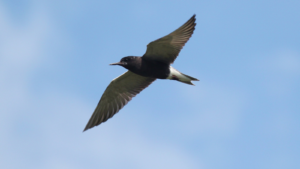
A black tern soars in the sky.Photo by Ken Sturm/USFWS | Public Domain
Black Terns can be seen at Cashes Ledge during their annual migrations. Their plumage contains deep hues of black and silver, and they are very social – foraging and traveling in flocks of hundreds or thousands. The North American population of the Black Tern has sadly declined since the 1960s, with half being lost in the past fifty years. This can be attributed to a combination of factors, including overfishing of their winter feeding grounds and drainage of wetlands where they nest.
Pomarine Jaeger

Photo by Gunnsteinn Jonsson | CC-BY-3.0
Between the size of a crow and a goose, the Pomarine Jaeger is the largest of the three Jaeger Species – the other two being the Parasitic Jaeger and Long-tailed Jaeger. The Pomarine Jaeger can be described as a pirate because of its unusual and somewhat unsavory feeding habits. Instead of diving for fish like the other seabirds on this list, the Pomarine Jaeger steals the catches of smaller birds or even hunts these birds themselves.
Atlantic Puffins

Atlantic puffins off the coast of MainePhoto by USFWS | Public Domain
Arguably the cutest bird on our list, the Atlantic Puffin sports a distinctly large bill and black and white plumage. These birds have long lifespans–on average, they live for 30 years. Since they feed on small fish about 2-6 inches long, they often carry multiple in their beaks at a time when they are feeding.
Herring Gull
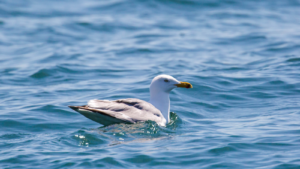
Seagulls don’t just spend their time on the coast–some fly out to hunt at sea.Photo by Melissa McMasters | CC-BY-2.0
You’re probably very familiar with the next Cashes Ledge visitor: While Herring Gulls are notorious for their antics in coastal towns, where they scavenge french fries and other food from our trash (or hands). These large birds also spend time off shore, where they feed on marine invertebrates such as fish, squid and mollusks. This species boasts some of the largest and heaviest eggs of all birds, and they are known to raid the nests of other birds.
Great Black-Backed Gull
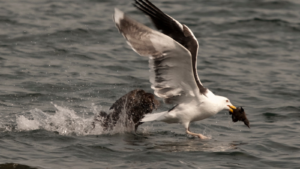
Great black-backed gulls are keen opportunists and will steal from and even eat smaller birds.Photo by Needsmoreritalin | CC-BY-SA-3.0
Another common sight for beachgoers along the Atlantic coast, the Great Black-Backed Gull is the world’s biggest species of Gull, with both sexes reaching a length of about 30 inches and a wingspan of about 60 inches. These birds take the opportunism of Herring Gulls to the next level, stealing the catches of other seabirds and preying on smaller birds as well. They inhabit shorelines but on occasion rest on land in open areas.
Common Tern
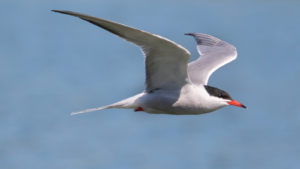
A common tern can be seen across the U.S. and around the globe.Photo by Alexis Lours | CC-BY-4.0
Common Terns can be identified by their distinct orange bills, black cap, and gray underbelly. The Common Tern feeds on smaller fish found close to the water’s surface, diving from above and plunging to make their catches. The Common Tern drinks water in flight (or “on the wing”), dipping its bill into the water. The species is common throughout the Northeast U.S., but unfortunately, the Common Tern is in steep decline.
Topics
Authors
Kelsey Lamp
Director, Protect Our Oceans Campaign, Environment America Research & Policy Center
Kelsey directs Environment America's national campaigns to protect our oceans. Kelsey lives in Boston, where she enjoys cooking, reading and exploring the city.
Sahm Schiller
Oceans Intern, Environment America Research & Policy Center
Sahm is a senior at Tufts University, majoring in Applied Environmental Studies.
Find Out More

A wave of youth ocean activism in Boston
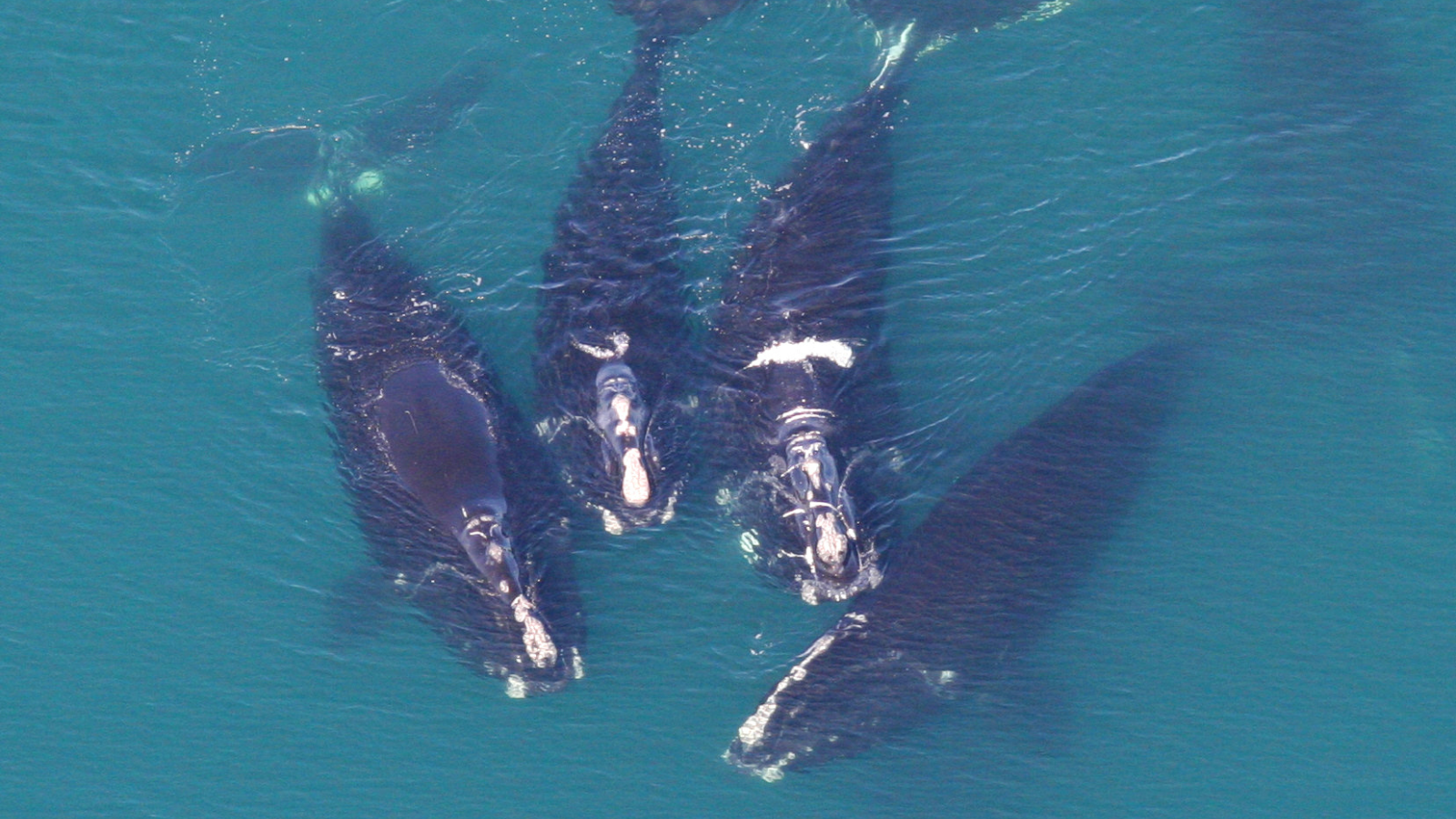
Save the Whales

Update: stranded right whale was entangled in Maine fishing gear


